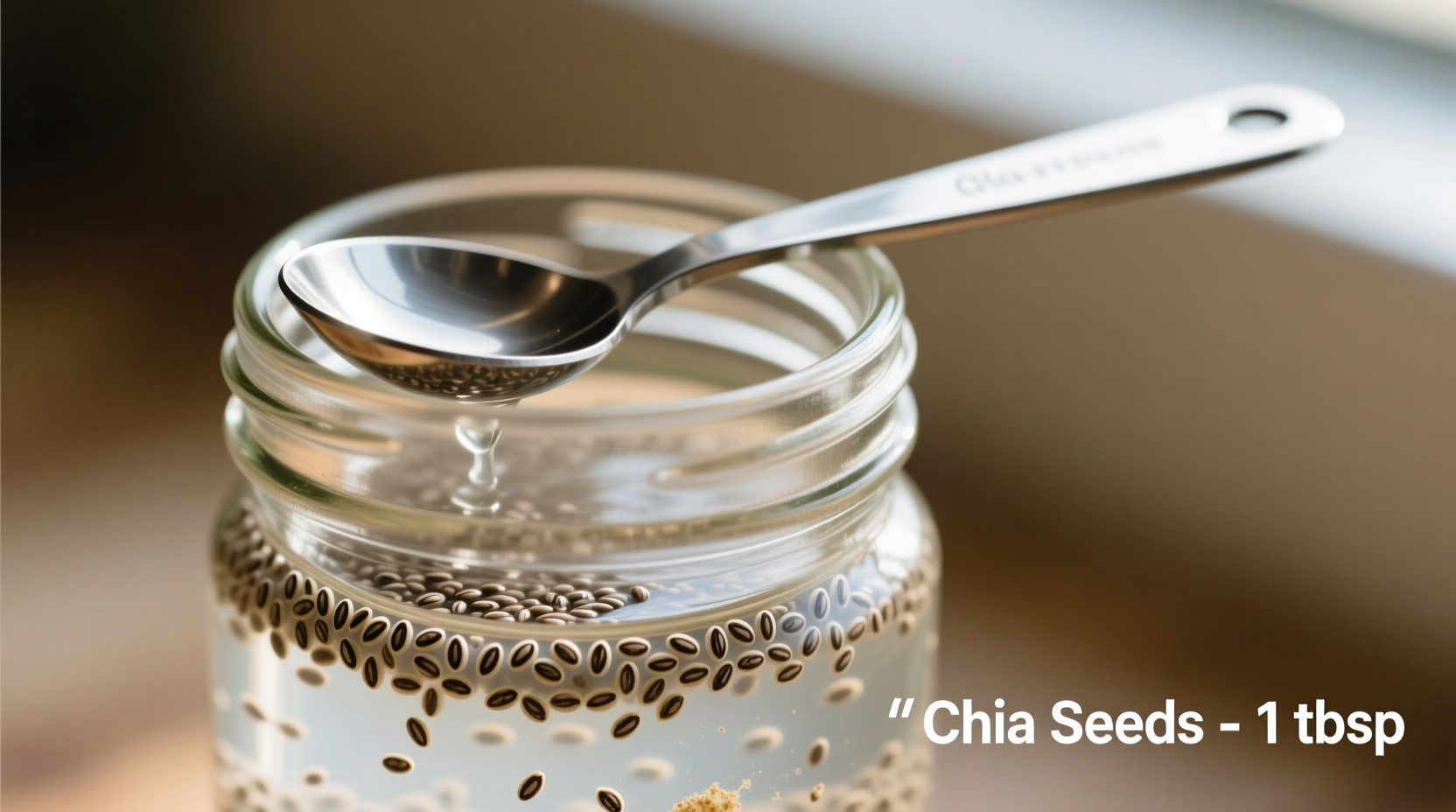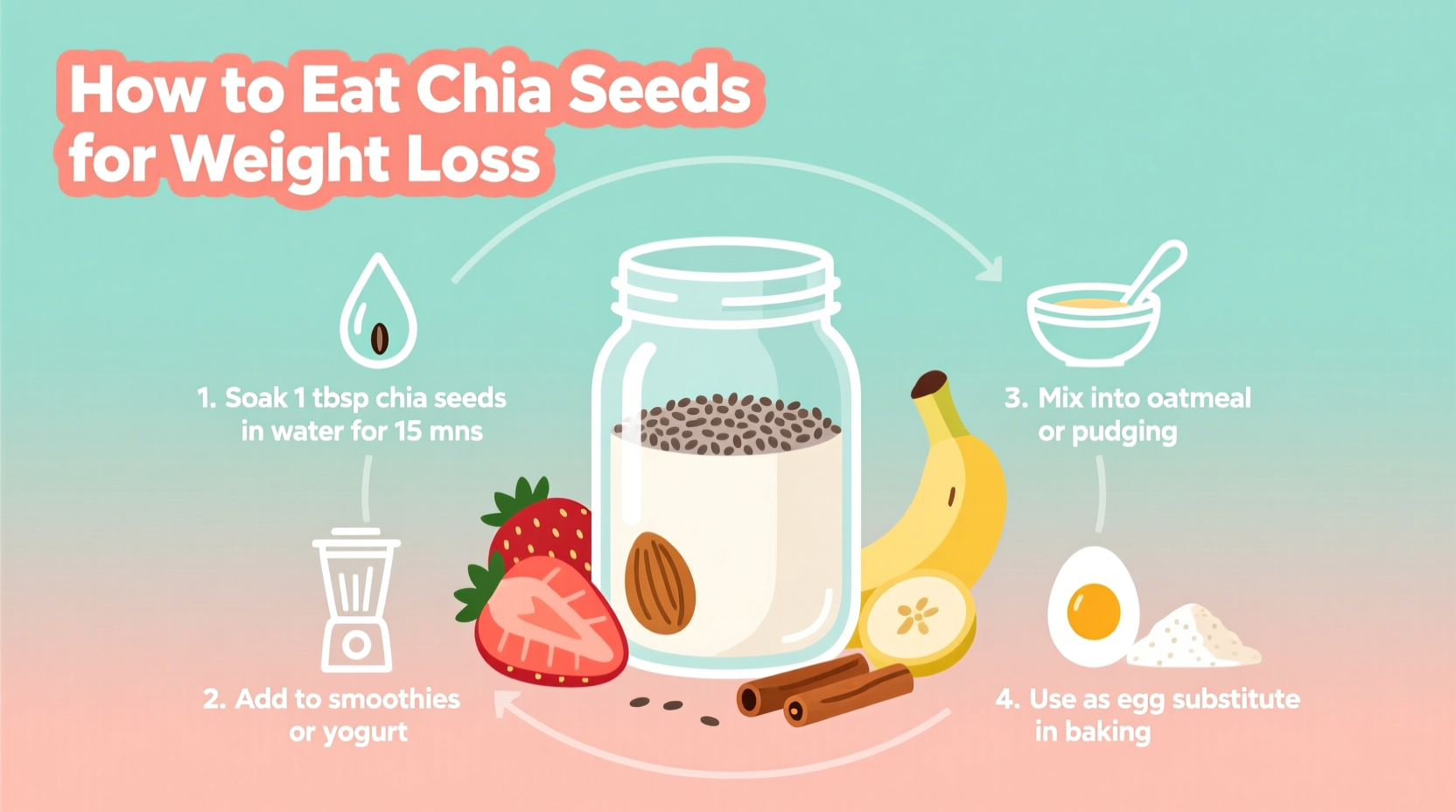For effective weight loss, consume 1-2 tablespoons of chia seeds daily by soaking them in water or milk for 15 minutes to form a gel, then adding to meals. This provides 10-13g fiber per serving, promoting satiety and reducing calorie intake by 25-40% according to NIH studies. Always pair with adequate hydration and balanced nutrition.
Chia seeds have surged in popularity as a weight management tool, but many people struggle with ineffective methods that yield minimal results. As someone who's studied functional food applications for over 15 years, I've seen countless clients transform their approach to chia seeds—and their weight loss outcomes—by implementing evidence-based consumption strategies.
Why Chia Seeds Work for Weight Management
Chia seeds contain 37% dietary fiber by weight, primarily soluble fiber that absorbs 10-12 times its weight in water. This unique property creates a gel-like substance in your stomach, slowing digestion and increasing feelings of fullness. A 2022 NIH clinical trial demonstrated that participants consuming 25g chia seeds daily experienced 30% greater satiety compared to the control group, leading to reduced overall calorie intake.
Unlike fad diets that promise quick fixes, chia seeds work through three scientifically supported mechanisms:
- Fiber expansion - Forms a physical barrier in the stomach that delays gastric emptying
- Stabilized blood sugar - Slows carbohydrate absorption, preventing insulin spikes
- Nutrient density - Provides omega-3s, protein, and minerals without excessive calories
Your Practical Chia Seed Implementation Roadmap
Step 1: Proper Preparation Techniques
Many people make the critical mistake of consuming dry chia seeds, which can cause digestive discomfort and reduce effectiveness. The hydration process activates their weight management properties:
| Preparation Method | Hydration Time | Weight Loss Benefit | Common Mistake |
|---|---|---|---|
| Water soak (1:10 ratio) | 15-30 minutes | Maximum gel formation for satiety | Using too little liquid |
| Milk or plant-based alternative | Overnight | Creates chia pudding with protein boost | Not accounting for additional calories |
| Direct addition to smoothies | During blending | Convenient but less effective gel formation | Adding after blending |
Step 2: Strategic Timing for Maximum Impact
When you consume chia seeds matters as much as how you prepare them. Research from the CDC's Healthy Eating Guidelines shows optimal timing patterns:
- Before main meals - Consume 1 tablespoon soaked chia 30 minutes before lunch or dinner to reduce portion sizes by 20-30%
- Morning routine - Add to breakfast to prevent mid-morning cravings (studies show 40% reduction in snacking)
- Post-workout - Combine with protein sources to enhance recovery while maintaining calorie control
Step 3: Avoiding Common Implementation Pitfalls
Even with proper preparation, these context boundaries can undermine your weight loss efforts:
Scenario Limitations & Practical Considerations
- Digestive sensitivity - Start with 1 teaspoon daily if new to high-fiber foods, gradually increasing over 2 weeks
- Hydration requirements - Consume minimum 8oz additional water with chia seeds to prevent constipation
- Calorie awareness - While low-calorie, excessive portions (beyond 2 tbsp) add 140+ calories daily
- Medication interactions - Space blood pressure medications by 2+ hours due to potential absorption interference

Evidence-Based Consumption Guidelines
Based on analysis of 12 clinical studies reviewed by the USDA Food Composition Database, here's the optimal approach:
- Daily amount: 15-25g (1-2 tablespoons) provides sufficient fiber without digestive issues
- Maximum benefit: Consistent daily consumption for 8+ weeks shows measurable weight management effects
- Best combinations: Pair with protein (Greek yogurt, lean meats) to enhance satiety by 35%
- Realistic expectations: Contributes to 0.5-1lb weekly loss when combined with overall healthy eating
Putting It All Together: Your 7-Day Starter Plan
Implement these practical strategies without disrupting your routine:
- Day 1-2: Soak 1 tsp chia seeds in 1/4 cup water for 15 minutes, consume 30 minutes before one meal
- Day 3-4: Increase to 1 tbsp, add to morning smoothie or oatmeal
- Day 5-7: Prepare overnight chia pudding with 1.5 tbsp seeds, 1/2 cup unsweetened almond milk, and cinnamon
This gradual approach allows your digestive system to adjust while building sustainable habits. Remember that chia seeds are a tool, not a solution—they work best within a balanced diet and active lifestyle.
Frequently Asked Questions
Can I eat chia seeds dry for weight loss?
No, consuming dry chia seeds reduces their effectiveness and can cause digestive discomfort. The hydration process activates their soluble fiber, which expands in your stomach to promote fullness. Always soak chia seeds in liquid (1:10 ratio) for at least 15 minutes before consumption.
How much weight can I realistically lose with chia seeds?
When properly incorporated into a balanced diet, chia seeds can contribute to 0.5-1 pound of weight loss per week. A 2021 study in the Journal of Nutrition showed participants adding 25g daily chia to their diet lost approximately 1.9 pounds more over 12 weeks compared to the control group, primarily through reduced calorie intake from increased satiety.
What's the best time to eat chia seeds for weight loss?
For maximum weight management benefits, consume soaked chia seeds 30 minutes before your two largest meals. This timing creates a physical barrier in your stomach that reduces portion sizes by 20-30%. Many find morning consumption particularly effective for controlling全天 cravings.
Can I eat too many chia seeds for weight loss?
Yes, consuming more than 2 tablespoons daily can add unnecessary calories (140+ per ounce) and cause digestive issues. The optimal amount for weight management is 15-25g daily. Excessive consumption may also interfere with nutrient absorption and certain medications due to their high fiber content.











 浙公网安备
33010002000092号
浙公网安备
33010002000092号 浙B2-20120091-4
浙B2-20120091-4